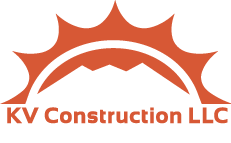In the dynamic world of construction, understanding various billing models is crucial for both contractors and clients. At KV Construction LLC, we prioritize transparency and efficiency in our billing practices, ensuring our clients are well-informed and comfortable with the financial aspects of their projects. Let’s delve into the most prevalent billing models in the construction industry, highlighting their unique features and applications.
Fixed-Price Contracts: Clarity and Predictability
Fixed-price contracts, often referred to as full project bids, are a staple in the construction sector. This model offers a clear, upfront cost for the entire project, making it a preferred choice for clients who value budget certainty. Whether it’s a comprehensive siding replacement in Seattle or a major renovation, fixed-price contracts define the scope, timeline, and cost, minimizing financial surprises.
However, it’s important to note that unforeseen circumstances, like discovering dry rot during a siding repair in Seattle, may necessitate change orders. These are amendments to the original contract, accounting for additional work not initially anticipated. At KV Construction LLC, we ensure that any potential for such occurrences is communicated upfront, maintaining transparency with our clients.
Time and Materials: Flexibility and Control
The time and materials model is another popular billing method, especially suited for smaller, more targeted projects. This approach is ideal for specific tasks like siding repair in Seattle, where the extent of work may not be fully predictable. Clients pay for the actual hours worked and materials used, offering a flexible and transparent billing structure.
This model is particularly advantageous when dealing with variable scopes, such as when tackling hidden issues in older buildings. Clients have the liberty to adjust the project scope as work progresses, ensuring they only pay for what is necessary. KV Construction LLC excels in this model, providing clients with detailed breakdowns of labor and material costs, fostering trust and satisfaction.
Size and Unit Billing: Efficiency in Large-Scale Projects
Size and unit billing is predominantly used in large-scale commercial constructions or new home builds. This method charges based on the size or unit of the construction, such as per square foot for siding installation. It’s an efficient way to bill for extensive projects, where the scale of work can be quantified in measurable units.
This model is particularly effective for projects with standardized elements, like exterior siding companies undertaking large developments. It offers a straightforward way to calculate costs, making it easier for clients to budget and plan their finances.
Conclusion: Tailored Solutions for Every Project
At KV Construction LLC, we understand that each project is unique, and so are the financial considerations that come with it. Whether it’s a full-scale siding replacement in Seattle or a nuanced repair job, our billing models are designed to align with the specific needs and preferences of our clients. By combining our expertise with transparent and adaptable billing practices, we ensure that every project is not only a construction success but also a financial journey that our clients are comfortable and satisfied with.

